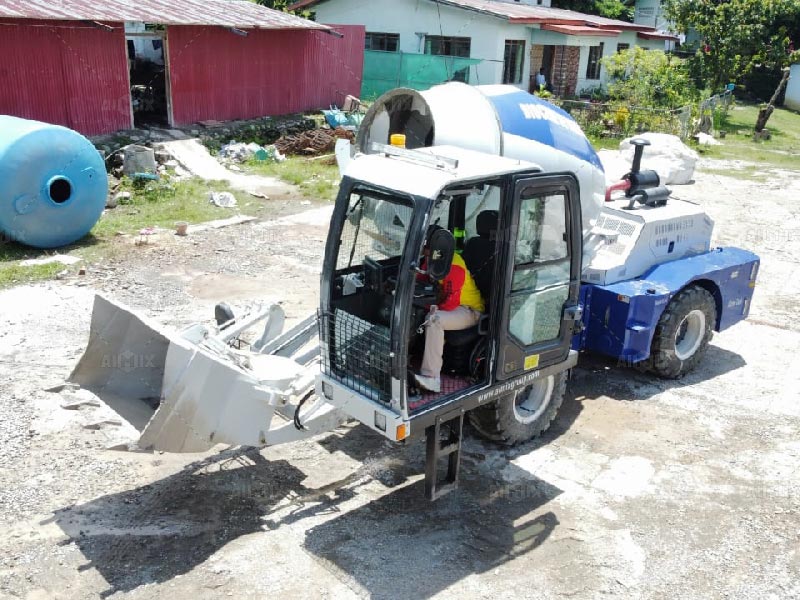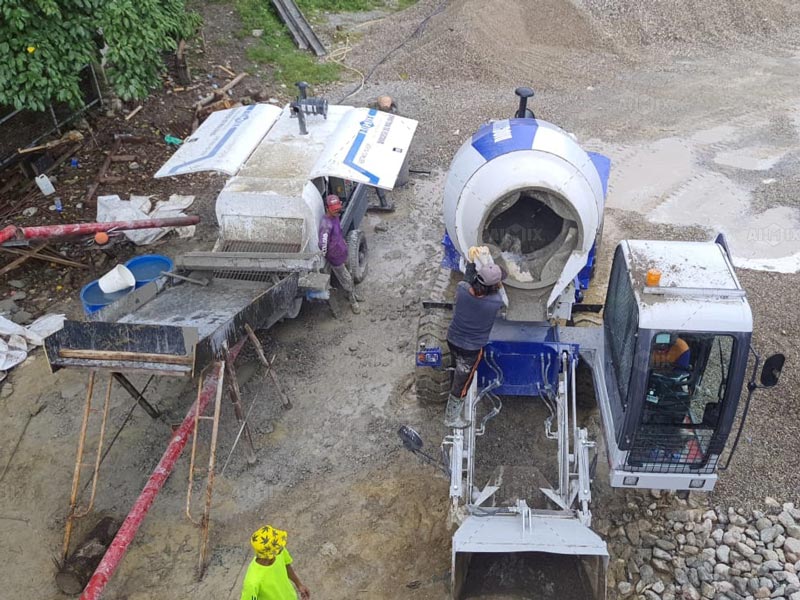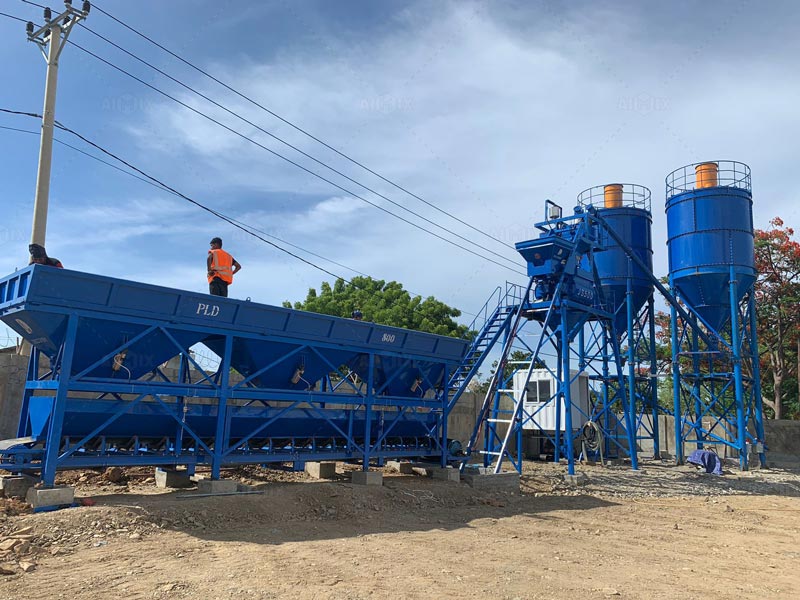The construction industry is always evolving, with equipment designed to improve efficiency and reduce costs. Among the most popular solutions for small to medium-scale concrete production are self-loading concrete mixers and mini concrete plants. Both serve distinct roles, but can a self-loading concrete mixer fully replace a mini concrete plant? This article explores their key differences, advantages, and limitations to help contractors make informed decisions.

What is a Self-Loading Concrete Mixer?
A self-loading concrete mixer(hormigonera autocargante) is an all-in-one mobile solution that combines loading, mixing, and transporting concrete within a single machine. It features a rotating drum, an automatic loading system, and a cab for easy maneuverability on various terrains.
Key Features of a Self-Loading Concrete Mixer
- Automatic Material Loading: No need for a separate loader to feed aggregates.
- On-Site Concrete Mixing: Ensures fresh concrete is available exactly when needed.
- Compact and Mobile: Ideal for projects in remote or confined spaces.
- 360-Degree Drum Rotation: Allows efficient discharge at different angles.
Advantages of a Self-Loading Concrete Mixer
- Increased Mobility: Easily transported between different job sites.
- Time-Saving: Reduces delays associated with concrete transportation.
- Lower Labor Costs: Operated by a single person, unlike traditional batching plants.
- Minimizes Material Waste: Mix only what is needed, reducing excess concrete.
Limitations of a Self-Loading Concrete Mixer
- Lower Output Capacity: Typically produces 1 to 4 cubic meters per batch.
- Less Precise Batching: Accuracy may vary compared to fully automated plants.
- Not Ideal for Large Projects: Limited capacity makes it unsuitable for high-volume needs.

What is a Mini Concrete Plant?
A mini concrete plant(mini planta de concreto) is a small-scale batching system that includes aggregate batching machines, cement silos, conveyors, and mixers. It is designed for projects requiring consistent and reliable concrete production.
Key Features of a Mini Concrete Plant
- Automated Batching System: Ensures precise concrete mix ratios.
- Higher Production Capacity: Can produce up to 50 cubic meters per hour.
- Modular Design: Can be relocated if needed but requires setup.
- Integration with Concrete Pumps: Works efficiently with pumping equipment.
Advantages of a Mini Concrete Plant
- Consistent Concrete Quality: Precision batching reduces mix variations.
- Higher Output: Suitable for medium to large projects.
- Better Control Over Production: Allows for scheduled and bulk production.
- Cost-Effective for Large Projects: Reduces the need for frequent reloading.
Limitations of a Mini Concrete Plant
- Less Mobile: Requires setup and installation before operation.
- Higher Initial Investment: More expensive than a self-loading mixer.
- Needs More Space: Requires a designated area for installation.

Key Differences Between Self-Loading Mixers and Mini Concrete Plants
1. Production Capacity
Mini concrete plants have a much higher output than self-loading mixers. If a project requires a continuous concrete supply, a mini concrete plant is the better option. Self-loading mixers(Autohormigoneras Perú) are limited to small batches, making them better suited for minor projects.
2. Flexibility and Mobility
A self-loading concrete mixer is highly mobile, making it ideal for remote and scattered job sites. In contrast, a mini concrete plant, though transportable, requires installation and setup, making it less flexible for short-term or rapidly changing projects.
3. Precision and Quality Control
Mini concrete plants use automated systems to ensure precise concrete composition, reducing the risk of inconsistencies. Self-loading mixers rely more on the operator’s judgment, which can sometimes lead to mix variations.
4. Labor and Operational Costs
A self-loading mixer reduces labor costs as it requires only one operator. Mini concrete plants, however, require multiple workers for batching, monitoring, and maintenance. Despite the higher labor needs, mini plants offer economies of scale for larger projects.
5. Cost Considerations
Self-loading mixers have a lower initial investment and lower operating costs. However, for projects that require large amounts of concrete, a mini plant may be more cost-effective in the long run due to its high production efficiency.
6. Suitability for Different Project Types
- Self-Loading Concrete Mixer: Best for small-scale, mobile, or remote projects requiring flexibility and fast mixing.
- Mini Concrete Plant: Ideal for medium to large projects requiring consistent and bulk concrete production.
Can a Self-Loading Concrete Mixer Replace a Mini Concrete Plant?
While a self-loading concrete mixer is an efficient alternative for small-scale projects, it cannot completely replace a mini concrete plant. The decision should be based on factors such as required concrete volume, project duration, and mobility needs.
When to Choose a Self-Loading Concrete Mixer
- For projects in remote areas where batch plants are unavailable.
- For small-scale construction, road repairs, or temporary worksites.
- When frequent relocation is necessary.
- To reduce labor and equipment costs.
And you can click this link for more information about self-loading concrete mixers: https://aimixgrupo.com/autohormigonera/autohormigonera-paraguay/
When to Choose a Mini Concrete Plant
- For continuous concrete production over an extended period.
- When batch consistency and quality control are critical.
- For medium to large-scale infrastructure and commercial projects.
- When high production capacity is required.
Conclusion
A self-loading concrete mixer is a great solution for small projects needing mobility and flexibility, while a mini concrete plant provides superior production capacity and precision for larger projects. Instead of replacing each other, these machines serve complementary roles in different construction scenarios. Choosing the right equipment depends on the scale, location, and specific requirements of your project.
